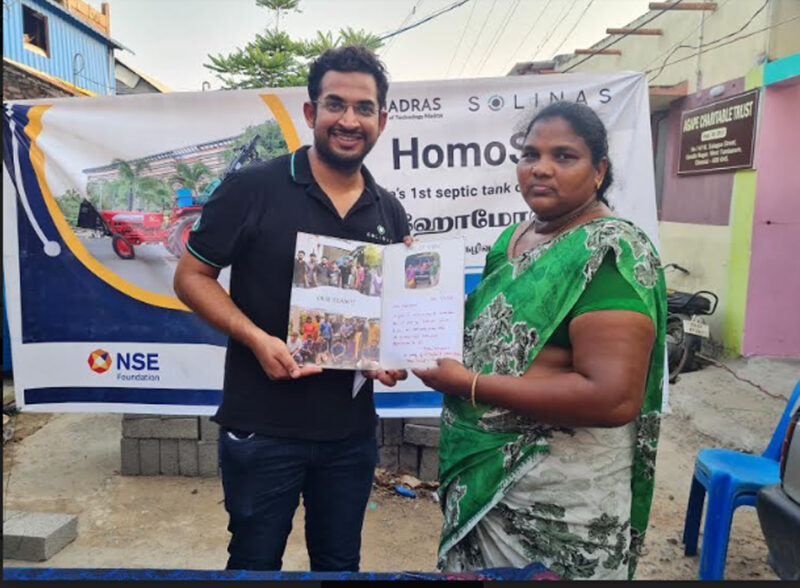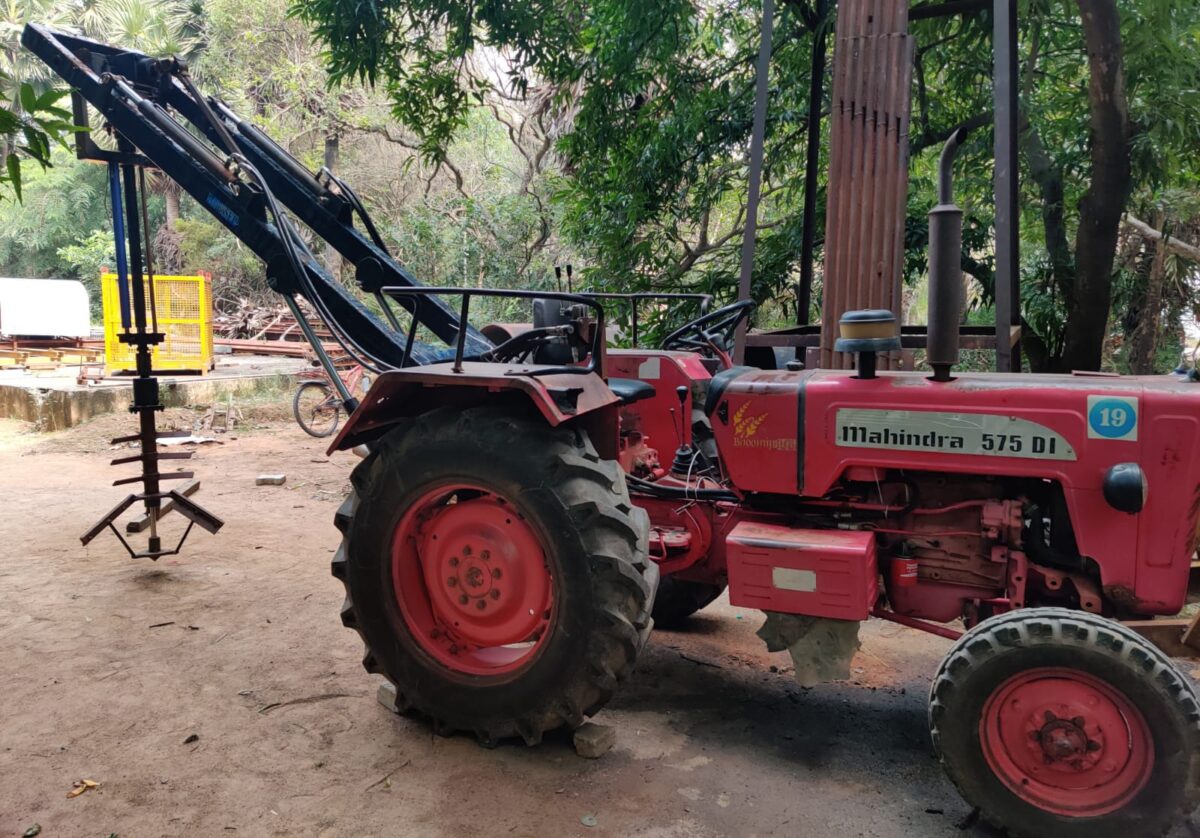The robot that can end manual scavenging came into being with an effort that started about 4-5 years back in the lab of Professor Prabu Rajagopal, Centre for Non-destructive Evaluation, IIT-Madras. His team was developing technology for remote inspection of structures when a final year Master’s student Divanshu Kumar developed the first version as part of his thesis in 2019.
Rajagopal recalls, “We developed a robot for remote inspection of the pipeline, and we were trying to see if this would find an application in the sewer line. We started discussing with sewer line people and through that we got connected to an NGO — Safai Karamchari Andolan (SKA) — that works on septic tanks.”
They mentioned that too many precious lives are lost in the cleaning of septic tanks. That’s how Prof Rajagopal’s team got started trying to develop a solution.
Multi-level support
Speaking of his team, Rajagopal says, “From 2020 onwards, our team was led by another student Bhavesh who just graduated his Master’s and took over this field. We also had a project scientist Sreehari V. These were the people at the initial phase.”
He continues, “Today, we have a team of about 15 people. Half of which are from our lab and the other half are a part of the startup Solinas, which is an integral part of our project.”
They have been granted two patents on the design of the robot and have applied for two patents for various key aspects of the technology. These are owned by IIT Madras.
The project had initial support from two sources. One was Socially Relevant Project, an initiative at IIT Madras and the other was a challenge called Carbon Zero during 2018-2020.
Atter that, support came from a number of CSR partners: WIN Foundation (agency involved in water sanitation), GAIL Foundation and Capgemini. Over the last year, NSE Foundation and L&T Technology Foundation funded a total of 10 units.
Working principles
The core of the technology is a rotary cutter similar to what you see in a kitchen blender, but vertically inverted. It is usually retracted so it is like an umbrella mechanism. It is sent into a manhole, opened up and then rotated. The cutter is custom designed.
Rajagopal explains, “We are working in multiple directions. One, we are now starting to reach out to municipalities and corporations. As a laboratory we are very good at technology, laboratory demonstrations and developments. That is why we are now partnering with Solinas start-up. We have filed for IP, but the IP will be licensed by Solinas.”
The start-up is run by the very people who created this technology, who are passionate about taking it to the field. It will now be mass fabricating the robot. IIT-M will be working on interfacing with the government, further redesign and redevelopment. It has adopted three routes:
- Reaching out to corporations and municipalities
- Talking to NGOS so that safai karamcharis themselves can own the robots
- Contacting cleaning companies to purchase these machines
Speaking on his plans for deployment in Delhi-NCR, Rajagopal states, “I can’t divulge the details, but we are in touch with Delhi at the government level.”
Explosion of interest
Elaborating on the reaction to the deployment of the first two units, Rajagopal says, “Response from sanitation workers has been overwhelming. I literally had tears in my eyes when we distributed the first two units of HomoSEP. After that, many self-help groups approached us on their own. There has been an explosion of interest. A very positive response has been received at safai worker level, NGO level and government level.”
Rajagopal explains that two units have been given to safai workers in the experimental phase. Eight more units are to be deployed within Tamil Nadu in a couple of months. Then the scale will be widened.
Field information will be used to refine the product. By next year, the robot should be ready for commercial sales. Rajagopal says, “Personally, I believe very strongly in working at the grassroots level. The route I have taken is driven by that.”
Asked when such robots can be seen in the field, Rajagopal comments, “Government has many priorities. I don’t know if this is going to be their No. 1 priority. Research can’t wait till we go through red tape. The problem we have is that generally people don’t understand that product development takes time. We can’t make a product out of thin air. We have been trying to gather funds for R&D. Engineering is a challenge.”
Though the government can’t be the only channel, they are trying to push through policy and regulatory changes so that it becomes mandatory to do cleaning using a mechanized process.

Affordable option
There are various types of machines, ranging from heavy-duty to sleeker versions and other versions, for domestic tank cleaning as well. “We are making the robot affordable for the average safai karamchari self-help group,” he says.
According to Rajagopal, manual scavenging is a techno-social problem. He elucidates, “We can solve the technological aspect of it, and the social aspect can be solved through sustained effort. An average safai karamchari should think of himself/herself as an entrepreneur and not just as a victim of this profession. That requires social interventions and through that we can hope to eliminate this issue. We want to solve the first step: the availability of technology; after that, there will be the question of availability of capital for acquisition.”
Asked what other projects his lab is currently involved in, Rajagopal reveals, “We have been working on projects on inspection of water distribution pipes, inspection of river crossing of bridges using underwater robots, inspection of dams using underwater robots, drone delivery of medical supplies, high-resolution imaging for medical diagnostics and usage of blockchain for medical supplies assurance.”
Rajagopal is clear that any social challenge requires sustained effort. Society should actually appreciate the requirement of scientific research in solving technological problems. That appreciation is not there. People think that science is for writing high-end journals. However, he believes that sustained research can solve some of the most pressing problems.
This project has played a stellar role in bringing together university, NGO, CSR industries and start-ups. Start-ups are an essential part of the story. “Without them, we would not have had the means to do the end effect. Youth will look at it as an inspiration and will try to repeat it”, he says.
For more stories that cover the ongoings of Delhi NCR, follow us on:
Instagram: https://www.instagram.com/thepatriot_in/
Twitter: https://twitter.com/Patriot_Delhi
Facebook: https://www.facebook.com/Thepatriotnewsindia





